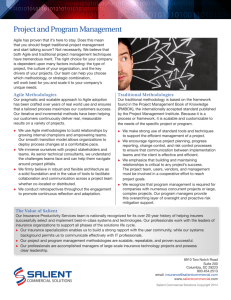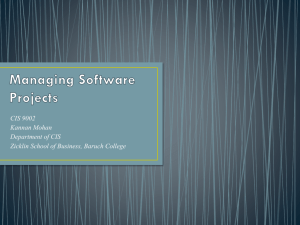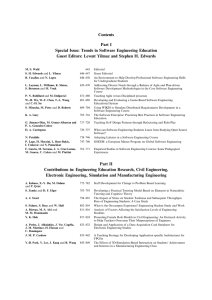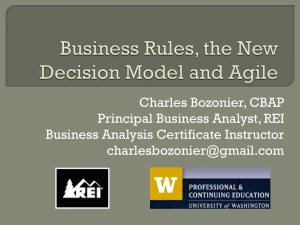Applying AGILE to Everyday Work PPT Only
advertisement
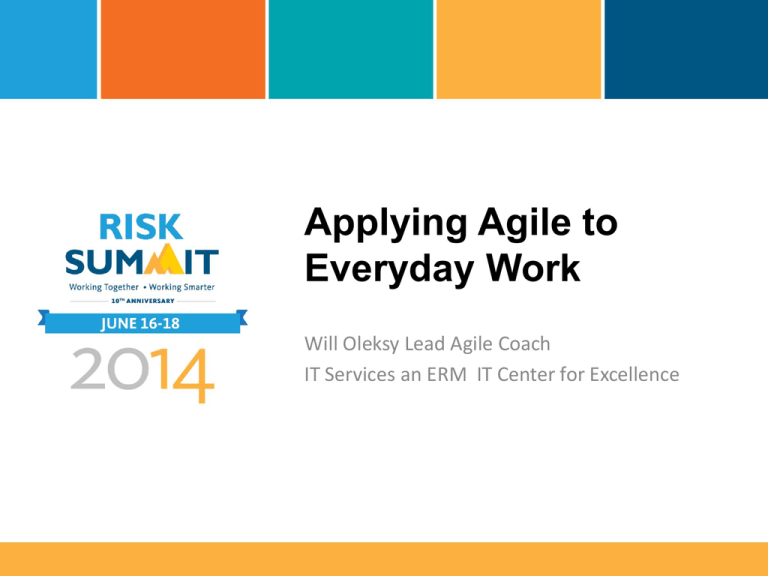
Applying Agile to Everyday Work Will Oleksy Lead Agile Coach IT Services an ERM IT Center for Excellence Agile Manifesto for every day work Individuals and interactions over processes and tools Actual product over extensive planning Customer collaboration over contract negotiation Responding to change over following a plan Agile Principles for every day work • • Our highest priority is to satisfy the customer through early and continuous delivery The most efficient and effective method of conveying information is face-to-face conversation. • Agile processes promote sustainable work. Everyone should be able to maintain a constant pace indefinitely. • Continuous attention to excellence and good design enhances agility. • Simplicity--the art of maximizing the amount of work not done--is essential. • The best results emerge from selforganizing teams/individuals. • At regular intervals, reflect on how to become more effective, then tune and adjust behavior accordingly. Welcome changes, even late in the project • Deliver frequently • You and your client must work together daily throughout the project. • • Build projects around motivated individuals. Give them the environment and support they need, and trust them to get the job done. Keys to an agile approach • • • • • • Prioritization Focus Feedback Small tasks Collaboration Continuous improvement • Action “The pain that comes with action is acute, gives you scars, and makes you grow. The pain that comes from inaction is lowgrade, makes you soft, and makes you decay.” Ideas Feedback Value How do you apply Scrum to every day business: • Small prioritized tasks • Short term commitment • Review • Collaboration • Daily review • Feedback • Improvement Exercise 1 Draw a House…. • There is a door on the lower floor in the middle of the house. • On each side of the door there is a window. • On the upper floor, there are three windows evenly spaced across the house. • The house has a pitched roof. • There is a chimney. • The house has a garage. • The house has a fence around a garden. • The fence has a gate. • There is a path from the door of the house to the gate. • The garden has a tree. Focus The Myth of Multi-Tasking • When most people talk about multitasking they really mean switching tasks. • No matter how they do it switching rapidly between two things is not as efficient as focusing on one thing to completion • A brain attempting to perform two tasks simultaneously will, because of the backand-forth stress exhibit a substantial lag in information processing Kanban Stop Starting things and Start Finishing them. Organizing your work Visualize your Tasks Minimize your WIP Improve Visualize the Workflow WIP Retrospect Resources • Coaching/Training braintrustgroup.com • Online tools – www.trello.com • Online learning and blogs – www.Personalkanban.com – www.Scrumalliance.com – http://agilemanifesto.org/ Contact Me: • Will Oleksy IT Services Lead Agile Coach – wroleksy@ucdavis.edu • IT Services An ERM Center for Excellence – Itservices.ucdavis.edu





